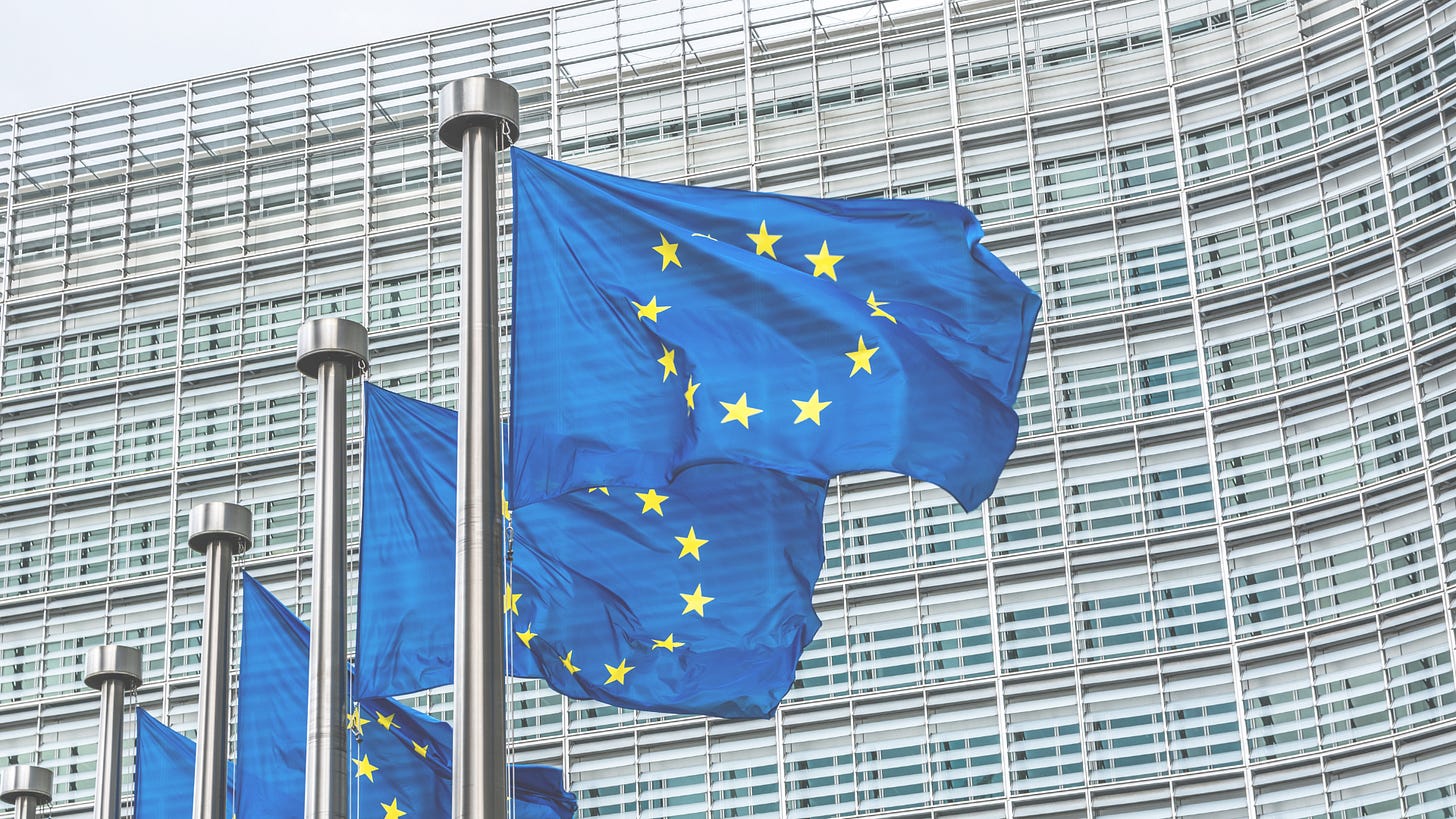The top five climate risk stories this week
1) EU banks to meet climate risk expectations by 2024

Firms should be in alignment with the European Central Bank’s (ECB) climate risk management expectations by 2024, a senior official has said.
In a speech on Wednesday, Frank Elderson — Vice-Chair of the Supervisory Board at the ECB — claimed this timeline was “reasonable” given his assessment of banks’ climate action plans and practices. Elderson said that in 80% of cases, firms planned to complete the actions required to bring them into compliance with its expectations by 2023.
“The ECB started to roll out its supervisory agenda on C&E [climate and environmental] risks in 2020 and, two years later, banks are making tangible progress with their C&E agendas, too,” said Elderson. “Many banks are still lagging behind in at least one area, though. That is why the ECB is laying out sufficiently accommodative deadlines for banks to fully implement C&E risks into their daily practices,” he added.
The central bank published C&E risk management expectations in November 2020, and last year urged firms under its supervision to align with them. Elderson said the ECB continues to check banks’ progress against their plans to comply with the expectations through 2022.
The ECB will also be conducting “on-site inspections” of banks’ climate risk management and completing a “targeted review” of their commercial real estate exposures to climate risks.
“All initiatives — the stress test, the thematic review and the on-site inspections — aim to monitor banks’ alignment with the expectations set out in the ECB’s Guide on C&E risks … We intend to fully integrate C&E risks in the regular supervisory dialogue and cycle and keep them there, treating them in the same way as any other material risks that banks face,” said Elderson.
2) EU greenlights sustainability disclosures

European policymakers struck a deal on climate and environmental disclosure rules that aim to stamp out corporate greenwashing.
On Tuesday, the European Council and Parliament said they had “reached a provisional political agreement” on implementing the Corporate Sustainability Reporting Directive (CSRD), which would force companies to publicly disclose information on their climate risks and opportunities, as well as how their activities impact certain sustainability topics.
“Greenwashing is over. With this text, Europe is at the forefront of the international race to standards, setting high standards in line with our environmental and social ambitions,” said Bruno le Maire, France’s Minister of Economy, Finance and Industrial and Digital Sovereignty.
Under the deal, the CSRD would apply to all large companies, meaning listed or unlisted firms with more than 250 employees, €40 million in revenue, and/or €20 million in assets. Large companies that already report under the European Union’s old Non-Financial Reporting Directive would have to comply with the CSRD from 2024, and other large companies from 2025. Small and medium-sized enterprises can opt out of the rules up until 2028.
Firms covered by the CSRD will have to produce reports that align with sustainability reporting standards drawn up by the European Financial Reporting Advisory Group (EFRAG), a private association that provides technical advice to the European Commission. On April 29, EFRAG published the first set of draft standards covering ESG issues. The climate standards would require companies to detail their plans to adapt to a low-carbon energy transition and report on any actions taken to “prevent, mitigate or remediate actual or potential adverse impacts” from climate change.
The standards would also mandate the reporting of specific climate-related metrics, including companies’ absolute Scope 1, 2, and 3 emissions, as well as their total emissions divided by revenue.
The provisional agreement on the CSRD must still be ratified through official votes of the Council and Parliament.
3) BoE makes little progress decarbonizing its asset portfolio

The Bank of England (BoE) said the carbon intensity of its bond holdings fell last year, but that its corporate portfolio is still aligned with an above-2°C warming trajectory.
In its third annual climate-related financial disclosure, released Thursday, the BoE reported that the weighted average carbon intensity (WACI) of the sovereign assets in its monetary policy portfolio dropped from 218 tonnes to 208 tonnes of carbon dioxide equivalent (CO2e) year-on-year. These holdings are all in UK gilts, meaning the WACI reflects the carbon intensity of the UK as a whole.
The WACI of the BoE’s Corporate Bond Purchase Scheme (CBPS) portfolio dropped 8% year-on-year to 233 tonnes of CO2e per million pounds of revenue. However, the BoE said some of this was driven by temporary emissions reductions caused by COVID-19 lockdowns in the UK. The implied temperature rise of the CBPS is now 2.4°C, down from the 3°C reported last year — but the Bank said this “reflects almost entirely the improvement made to the methodology.”
Last November, the BoE pledged to align the CBPS with the UK’s overall net-zero emissions by 2050 goals, targeting a 25% reduction in the portfolio’s WACI between 2020 and 2025. However, in February the BoE’s monetary policy committee said it would dissolve the CBPS at the end of 2023 or early 2024 in response to changing economic conditions. The CBPS held £17.6 billion of assets at end-February.
The BoE’s disclosure also detailed its current and planned actions on climate risk management. Going forward it intends to review its sovereign climate risk framework and produce methodologies to incorporate climate issues into collateral valuations.
4) Stranded asset risk tops $1trn — Carbon Tracker Initiative

Over $1 trillion of oil and gas assets could become stranded if fossil fuel companies don’t change their ways, says a new report by financial think tank Carbon Tracker Initiative. Sixty-percent of this total are held by publicly listed companies, exposing investors to a high degree of transition risk.
Carbon Tracker analyzed the fossil fuel holdings of companies listed on global stock exchanges, and found that they collectively own three times more coal, oil and gas reserves than can be burned without breaching the 1.5°C global warming target enshrined in the 2015 Paris Agreement. If the world pursues a low-carbon transition, many of these reserves will be rendered worthless, potentially exposing the companies and their investors to big losses.
“Fossil fuel companies are reliant on equity and debt markets for the financing of capital-intensive projects, both to raise capital to finance new investments, but also to maintain existing production facilities and drill new wells,” said Mike Coffin, Head of Oil, Gas and Mining at Carbon Tracker. “Financial centres facilitate, and profit from, both the primary equity raising and ongoing finance requirements for these companies, as well as secondary trading activities. As such, financial institutions that continue to enable such activities beyond climate limits, cannot themselves be viewed as Paris-aligned, and are also themselves increasingly exposed to transition risk,” he added.
Carbon Tracker also found that the “embedded emissions” in fossil fuel reserves held by publicly listed companies — meaning the amount of CO2 they would release if extracted and burned — has increased 40% in the last 10 years. However, it also said that the majority of embedded emissions are held by state-owned or private companies that are not listed on stock exchanges.
5) Crédit Agricole unveils portfolio decarbonization plan

France’s second-largest bank plans to cut the emissions linked with its oil and gas portfolio 30% by 2030 as part of a broader climate strategy released on Tuesday.
In the document Crédit Agricole pledged to make decarbonization pathways for 10 sectors, representing 60% of its overall credit exposure, starting with fossil fuels and the car industry. Pathways for steel, cement, power, commercial real estate, and shipping will be released by the end of the year. The bank said it would set interim milestones and detailed action plans for each sector, too.
Crédit Agricole said its oil and gas target is aligned with the International Energy Association’s Net Zero by 2050 scenario. For the automotive sector, the bank is targeting a 50% drop in financed emissions by 2030.
The firm is also launching a new business line — ‘Crédit Agricole Transitions & Energies’ — to consolidate its efforts supporting the low-carbon energy transition. As part of its renewable energy drive, the firm’s corporate and investment bank will increase its credit exposure to low-carbon energy 60% by 2025.
Reclaim Finance, a French nonprofit, welcomed Crédit Agricole’s strategy, but said that it alone does not guarantee alignment with a 1.5°C global warming target. It added that the bank’s decarbonization targets do not cover all of its financing activities or preclude it from financing new oil and gas projects.

